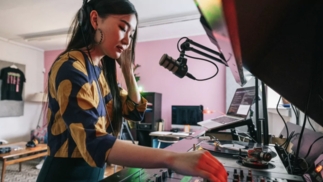Dance music industry hit $11.3 billion in 2022, but just 20% of creators make a living from it, IMS report finds
The annual Music Business report found that 20% of artists and DJs earn enough to make electronic music their full-time career, with 45% making no income from their craft at all

The dance music industry grew to $11.3 billion last year, although that figure doesn't feed back into most artists' ability to make a living, according to the latest IMS report.
The annual International Music Summit Music Business Report, out now following the end of the 2023 Ibiza event, highlights growth for the electronic music industry through 2022, with each sector of festivals and clubs, DJs and artists, hardware and software, recorded music and music publishing reporting increased revenue. This is up from 2021's $7.6 billion in revenue, which was a near-rebound from 2019's pre-pandemic levels at $8.7 billion. (The 2022 report listed 2021's growth figure as $6 billion and 2019's as $7.3 billion. It's unclear why the totals have been updated.)
The report credits much of that growth to the live music sector, citing Live Nation's jump in revenues from $6.3 billion in 2021 to the more-than-double figure of $16.7 billion in 2022. Live Nation has been the centre of controversy in the last year, causing outrage over ticket price inflation, glitchy sales, merch fees and other charges. The events and ticketing corporation has been the focus of an anti-trust US Senate Hearing earlier this year with another US Justice Department inquiry announced, and has a lawsuit about its "predatory" ticket pricing behaviour thrown out due to fine print in Ticketmaster's terms and conditions.
The other evidence for the live events sector's growth also chooses to focus on the industry's larger earners, showing revenue among Pollstar's Top 100 tours growing from $1.7 billion in 2021 to $6.3 billion in 2022. "Although many smaller venues are still struggling to rebuild, the wider industry is booming once again," the description reads. There is no other reference to grassroots venues in the report.
IMS nods to creators' ability, or lack thereof, to earn a living from the dance music industry, reporting that only 20% of artists and DJs earn enough to make electronic music their full-time career. 35% earn enough to make music their part-time job, while 45% don't earn any income on their craft at all. Of that 80% non-full-time share, 41% of creators expect music to be their full-time career, and 5% report they no longer earn enough from music to make it their full-time job.
Growth for streaming has slowed, though it remains the largest revenue source for recorded music, bringing in $20 billion in 2022 compared to physical and digital sales of $4.4 billion and $1.1 billion, respectively. 2021's IMS report found that "streaming isn’t working for all but a tiny number of artists" with only 1,650 artists earning at least $65,000. Those numbers have not been updated for 2022.
In terms of line-ups, despite the total number of female DJ bookings increasing by a reported 199%, 2022 saw the male share of global DJ bookings increase by 344%, according to research by Viberate and MIDiA Research. The report fails to mention non-binary artists.
Other notes on growth include: Ibiza ticket sales are up 55% from pre-pandemic levels, with venues putting on more events than ever; tech-house claims the Beatport best-selling slot for the second year in a row; electronic music gets heavily played on TikTok; and dance music fans can claim the title of most active fans of any genre, with more playlists and hours listened, as well as more subscriptions and physical, digital and merch purchases.
Read the IMS 2022 report here.





